Building Resiliency
 1.25 AIA LU/HSW; 0.1 IACET CEU*; 1 AIBD P-CE; AAA 1 Structured Learning Hour; This course can be self-reported to the AANB, as per their CE Guidelines; AAPEI 1 Structured Learning Hour; This course can be self-reported to the AIBC, as per their CE Guidelines.; MAA 1 Structured Learning Hour; This course can be self-reported to the NLAA.; This course can be self-reported to the NSAA; NWTAA 1 Structured Learning Hour; OAA 1 Learning Hour; SAA 1 Hour of Core Learning
1.25 AIA LU/HSW; 0.1 IACET CEU*; 1 AIBD P-CE; AAA 1 Structured Learning Hour; This course can be self-reported to the AANB, as per their CE Guidelines; AAPEI 1 Structured Learning Hour; This course can be self-reported to the AIBC, as per their CE Guidelines.; MAA 1 Structured Learning Hour; This course can be self-reported to the NLAA.; This course can be self-reported to the NSAA; NWTAA 1 Structured Learning Hour; OAA 1 Learning Hour; SAA 1 Hour of Core Learning
Learning Objectives:
- List key natural and man-made disasters that affect the built environment.
- Define resilient design and how it benefits cities, communities, and the economy.
- Discuss how designing for resiliency can impact building design and improve occupant health, safety, and well-being.
- Describe the benefits of specifying products designed for resiliency.
- Explain how buildings can achieve a U.S. Resiliency Council (USRC) rating.
This course is part of the Resiliency Academy
Designing for Resiliency: Architectural Products
Specialty architectural products are at the core of resilient building design. Most of these products tend not to be high-profile from an aesthetic sense and may initially be seen as minor design features, but the role they play in keeping buildings safe and secure for occupants can be significant. That said, architectural louvers, which we will discuss, are coming into their own in building design with some elegant and functional styles that allow for architectural creativity. This section will discuss key architectural products designed to address a wide range of natural and man-made disasters, protect buildings, and keep occupants safe.
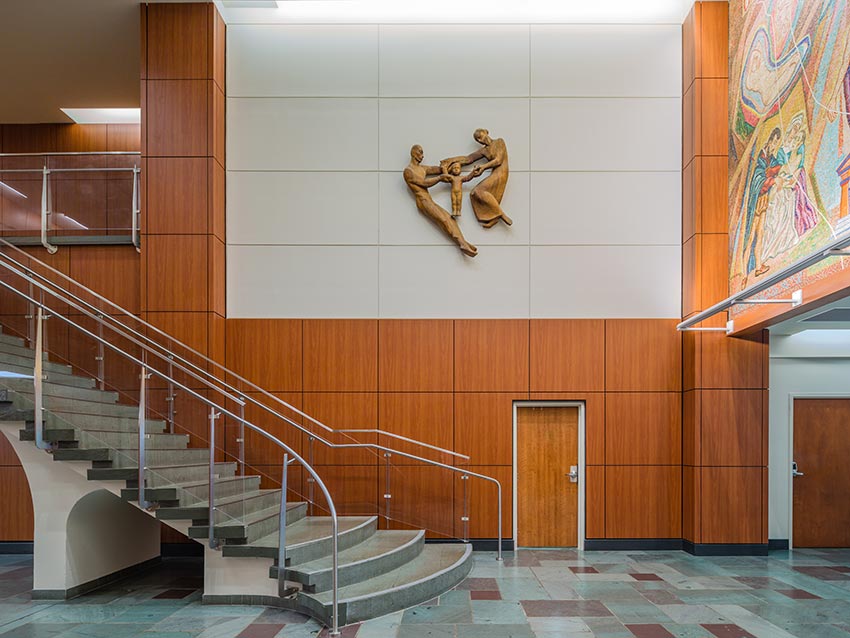
Photo: Ted Miles Photography
Resilient buildings include strategic interior design, as shown here at the University of South Alabama Medical Center. Hospitals and other public facilities can be gathering spaces after natural or man-made disasters, and they need to withstand heavy pedestrian traffic and abuse from carts, gurneys, and other bumps and scrapes. Pre-engineered wall-protection systems offer unmatched durability and impact resistance to preserve the built environment and protect capital investments.
Expansion Joint Covers
Expansion joints, also known as movement joints or MJs on structural drawings, are structural gaps designed to accommodate the movement of a structure or building in a controlled manner, thus protecting the internal and external finishes from potential damage. Movement may come from one or several different sources, including:
- thermal expansion or contraction of the building material as it responds to changes in temperature and moisture (swells and contracts).
- building settlement from live and dead loads of the structure on its supporting foundation.
- wind sway, as caused by the effect of strong winds on a building. The taller the building, the more significant the sway.
- seismic activity, which is a multidirectional movement, such as that caused by earthquakes.
Structures in dense urban areas may also experience vibration from local traffic or subway trains.
Many different structures can have expansion joints, such as bridges, sidewalks, and even ships—any structure where movement needs to be controlled. In buildings, the joints run through the building—both laterally and vertically along floors, ceilings, and walls—and are often wider near the top of the structure.
Expansion joint covers (EJCs) are designed to cover the gap of the expansion joint with minimal interruption to a building’s aesthetics and are engineered to accommodate any of the four types of movement previously mentioned. In seismic zones, expansion joints are implemented to allow the building to move with little to no damage during a seismic event. Moat cover systems accommodate very large movements around the perimeters of base-isolated structures. These systems are critical for the safe and functional egress of a building’s occupants and ingress for first responders during and after an event.
EJCs provide a covered transition across the expansion-joint opening and are not affected by movement along the surfaces of either side of the joint. They are a standard component for all large plan buildings; however, every building design is different in how the EJCs are used according to different performance requirements. Floors in different structures, for example, may require different types of joints and joint covers. In high-traffic buildings, such as shopping malls or airports, the joints and covers will need to resist the wear and tear of constant use, and so strong metal covers are appropriate. In a hospital, however, where infection control and patient comfort are critical, a flush floor finish and rubber seal is required to minimize jarring as gurneys and wheelchairs are rolled down hallways.
From a practical standpoint, it is important to specify the correct EJC model based on nominal, maximum, and minimum joint-size opening, which is typically determined by an engineer. Loading is also a critical component to ensuring the system functions correctly on a day-to-day basis. If these two factors (size and loading) are not correct in the specification, the EJC may not be installed correctly and will not function properly as needed.
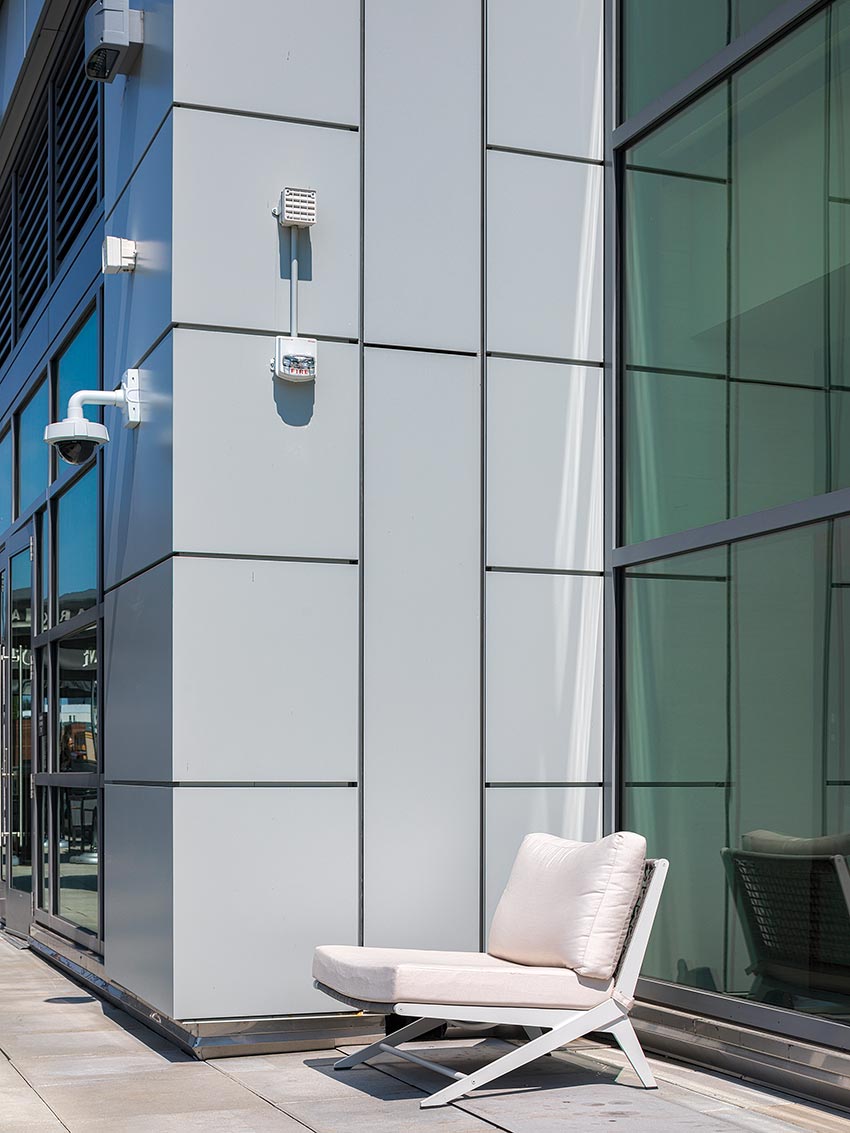
Photo: Sozinho Imagery
Expansion joints help stabilize buildings during freeze-thaw events and earthquakes. Lincoln Square, a mixed-use development in Bellevue, Washington, called for expansion-joint covers throughout the commercial and residential development to protect against shifting ground and building sway that can occur during seismic events.
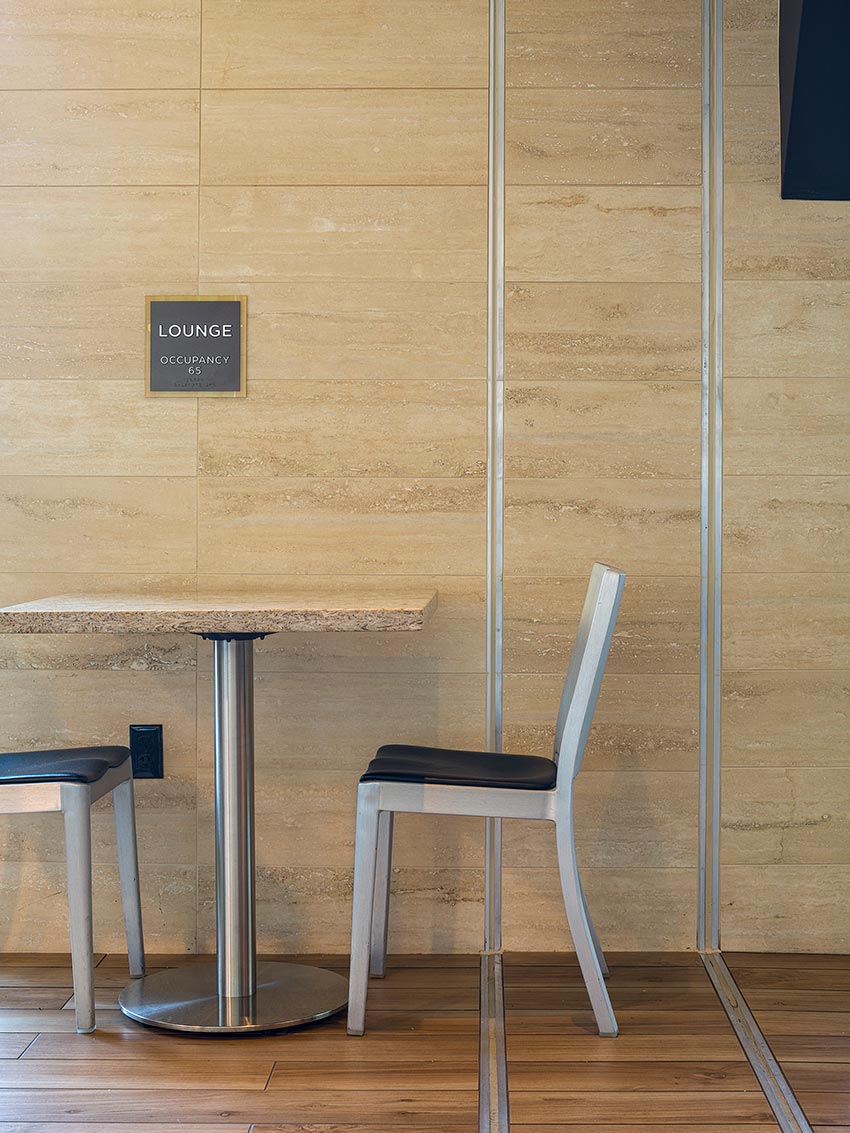
Photo: Sozinho Imagery
Expansion-joint covers range from standard solutions for floors, walls, ceilings, and roofs to highly engineered systems for corridors, base isolations, and stairs. They protect structures against damage and cracks that can occur during ground settling, thermal expansion and contraction, wind sway, and seismic activity. Some provide fire- and vapor-barrier protection.
EJCs help make buildings more resilient by addressing the different potential sources of movement listed above. For example, in buildings where freeze-thaw is an issue, or in areas where temperature extremes are common, the joint will help ensure that the building structure does not crack. Likewise, in regions where strong winds or hurricanes regularly occur, the joint and joint covers will protect the building as it sways. The same holds true for seismic activities.
Architectural Louvers
Architectural louvers are shutters or window blinds with adjustable horizontal slats that promote daylighting and airflow into a building but keep out precipitation and sunshine. As a design feature, architectural louvers can be used to cover building facades and equipment. Louvers are typically found where a building’s mechanical rooms are located, usually on top of the building or on mechanical floors around the building. They allow proper airflow so that the mechanical equipment can function properly, yet they still protect the equipment from wind-driven rain that occurs, especially during hurricanes.
From a resiliency perspective, architectural louvers can be used to resist high winds and rain, with some designs built to withstand hurricane and tornado conditions. In such extreme weather conditions, it is important that a building maintain airflow without water intrusion, which can happen if a louver isn’t designed to resist and rapidly drain water. In situations where a potential disaster may be man-made, such as an explosion, architectural louvers designed to be blast resistant can help protect the building and its occupants. Specifically, these louvers are designed to remain in their frame and stay anchored in the event of a blast so that the louver itself does not become a projectile.
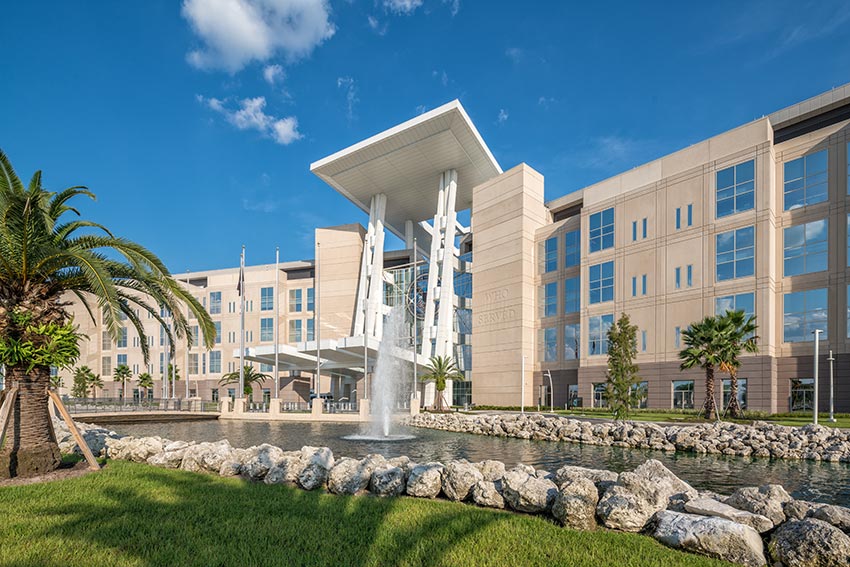
Photo: Ken West Photography
The Orlando Veterans Affairs Medical Center includes blast louvers engineered to withstand explosions up to 12 psi. The blast louvers are AMCA certified and designed to remain in place during explosive events so they don’t become a projectile—a government requirement.
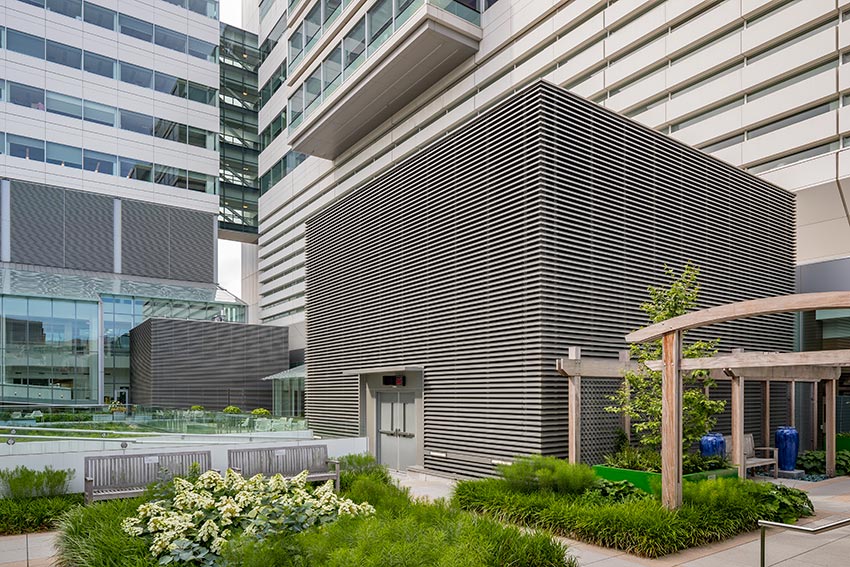
Photo: Lester Ali
The Penn Medicine Smilow Research Center includes storm-resistant louvers that protect its mechanical systems against wind-driven rain and severe winter storms, including bomb cyclones. Louvers are engineered and tested to perform as intended during various weather conditions, including rapid temperature fluctuations and pressure drops.











